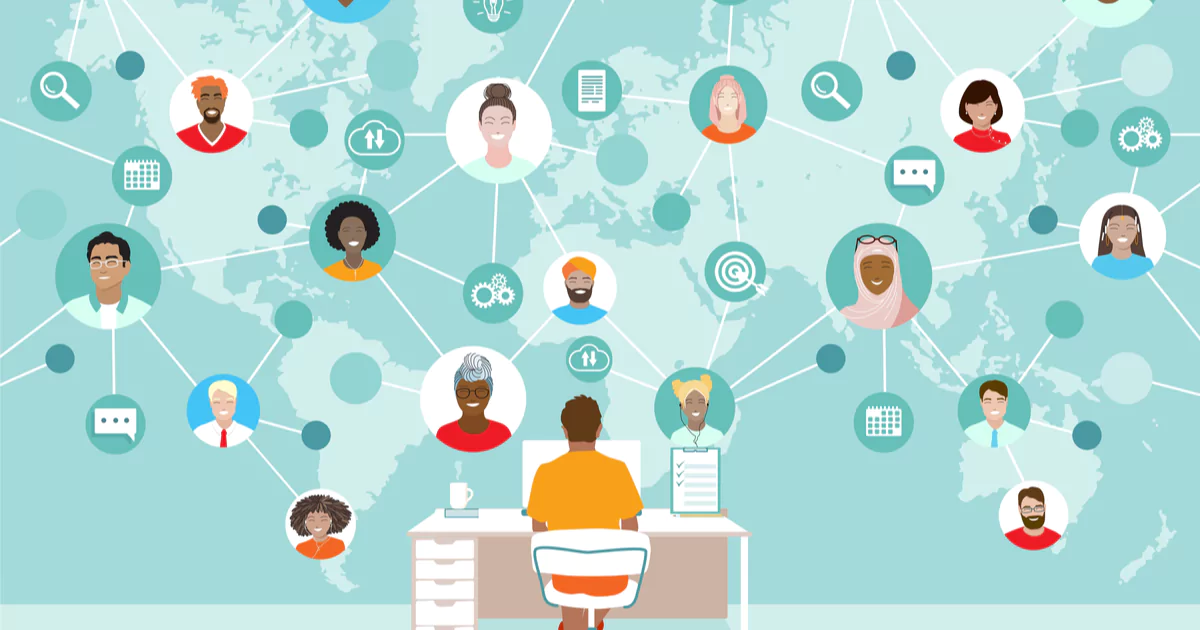Employee networking groups are one of the best ways to revolutionize your employee experience. If you’re looking to engage your employees and drive business results while tapping into their skills and knowledge, this is the way to go. Keep reading to learn how to start an employee network and why almost all the Fortune 500 companies have them. You’ll also learn about the benefits for your people and company, how to build a great networking group, and read about 11 real examples and the 5 best activities.
Table of Contents
What is an Employee Networking Group?
What are the Benefits of Employee Networking Groups?
What Makes a Great Employee Network Group?
How to Start An Employee Network Group

What is Employee Networking?
Employee networking refers to the events, activities, and efforts that encourage interpersonal connections between employees. It’s worth thinking about for your company because it’s a main driver for employee engagement.
5 Employee Networking Ideas
1. Team Building Activities
Team building activities boost morale, increase communication, and help foster workplace connections.
Try these creative team building activities at your next ERG event:
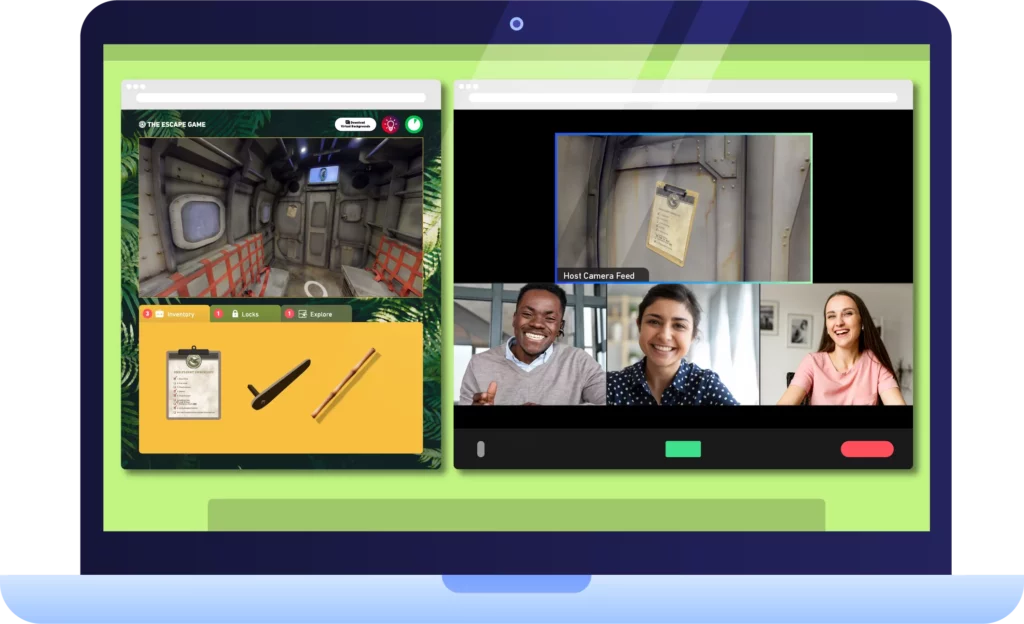
- Virtual escape room: Play with up to 400 people as you race against the clock and work together to solve problems and riddles in under an hour. You’ll make your networking event memorable with this immersive, out-of-the-box activity!
- Virtual scavenger hunt: Mix social engagement with friendly competition as employees hunt for items within their own homes or on the internet.
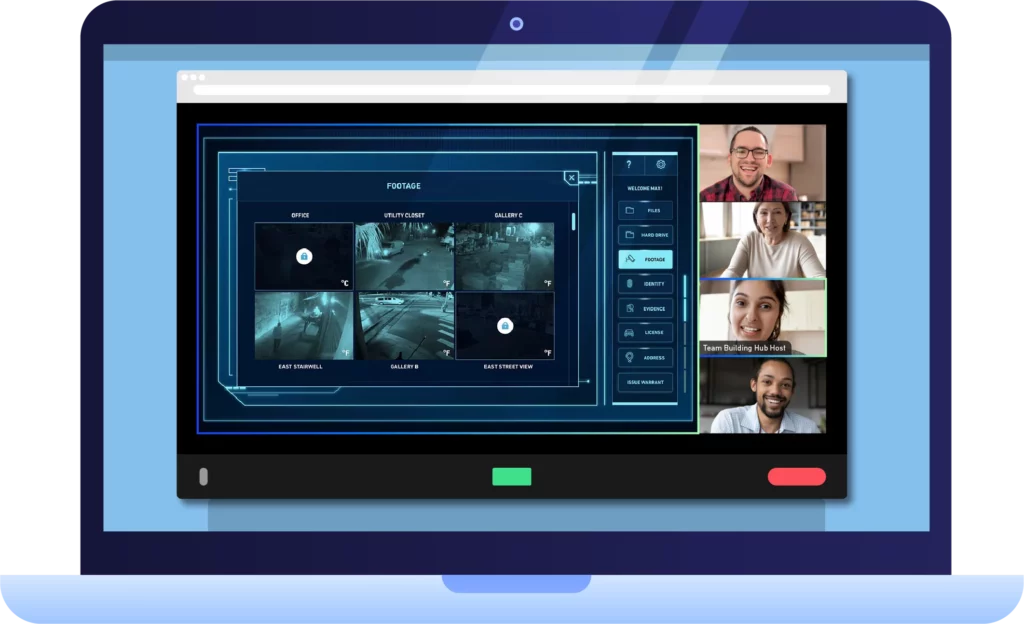
- Mystery games: For all the crime-junkies and amateur detectives, this fun twist to your next employee networking event is a guaranteed crowd-pleaser. Teams work together to piece together evidence and catch a thief faster than their competition!
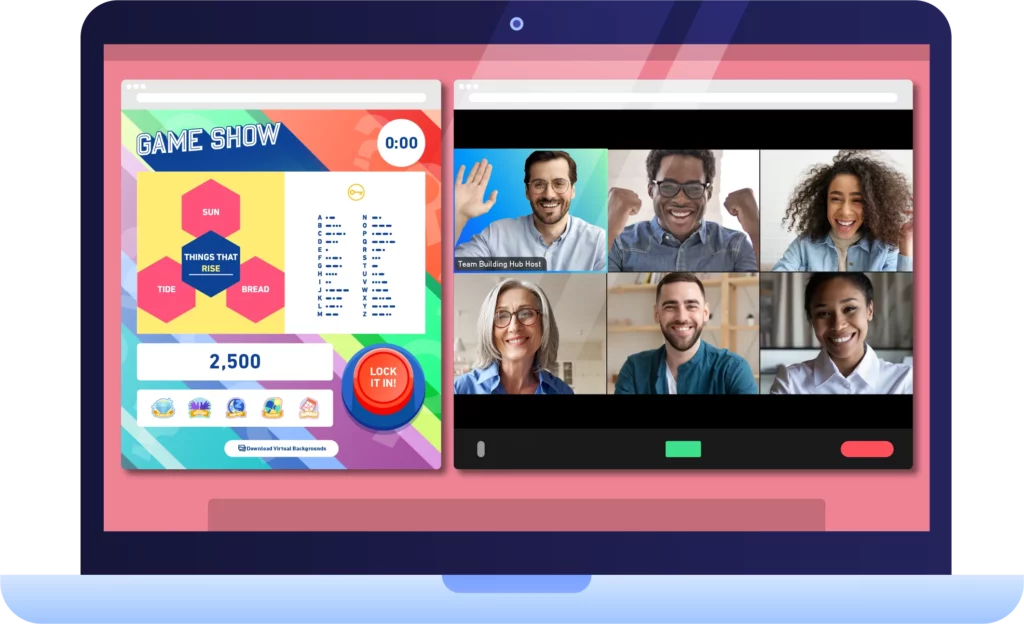
- Online game show: There’s a reason game shows are so popular — everyone loves them! Jam-packed with puzzles, challenges, and even surprises, an online game show at your next networking event is sure to keep the energy high. Rack up points and earn badges as you compete for the coveted high score.
2. “Ask Me Anything” Events
Invite a senior leader for a Q&A session with an employee network group. Your employees will get to know leaders as they field a mix of personal and professional questions. This is a win-win for both leaders and employees. Leaders become more human and approachable while employees get a better understanding about those leaders and the organization.
3. Lunch & Learns
In a perfect mix of learning and socializing, ERGs can help upskill employees on a variety of subjects by offering food and inviting a speaker to discuss:
- How to negotiate salary
- How to give and receive feedback
- Personal finance
- Productivity and time management tips
- Understanding diversity, equity, and inclusion
- Managing conflict in the workplace
4. Host Coffee Chats with Senior Leaders
Making senior leaders more accessible can help employees understand more about your company and their role. Asurion’s Young Professional Network hosts meetups like Beers & Careers and Coffee Talk to create a space for leaders to share career advice or answer questions in a casual environment. Executive leaders, vice presidents, and senior vice presidents give undivided attention to young employees who are hoping to learn more.
5. Volunteer Days and Events
Employee network groups often find ways to give back and serve the causes and interests that form the basis for their group. Studies show multiple physical and mental health benefits to volunteering. It also provides a sense of purpose to participants.
Here are a few volunteer ideas to try:
- Collect toys for single parent families
- Teach diverse students about jobs in your industry
- Organize neighborhood clean ups
- Create a book exchange or collection drive for children
- Develop a mentorship program for students
What is an Employee Networking Group?
Employee networking groups are voluntary, employee-led groups made up of individuals who share common interests, characteristics, backgrounds, or demographic factors.
These groups can be based on:
- Religious affiliation
- Sexual orientation
- Race or ethnicity
- Age
- Parental status
- Military status
- Gender identity
- And more!
You might also hear of employee networking groups being referred to as Business Resource Groups (BRG), Employee Resource Groups (ERG), or Affinity Groups (AG). While these terms are often used interchangeably, there might be slight differences between them depending on whether they are formal or informal and if they contribute to business decisions and strategy at a company. Typically, ERG and BRG refer to the same concept, whereas an AG might be a more informal space for employees to connect.
Let’s look at a few differences you might encounter depending on the term a company chooses to use for employee-led groups.
- Affinity Group: Typically an informal space, focused on visibility and community for members
- Employee Resource Group: Typically a formal space, focused on visibility and community, in addition to education and influence for members
- Business Resource Group: Typically a formal space, focused on visibility, community, education, influence, and driving business value

11 Real Examples of Employee Networking Groups
Employee networks run the gamut. They can be identity-based, mission-based, faith-based, and more! Keep reading to see how different companies describe employee network groups and how they impact employees and the business.
1. A network for people with disabilities
At AT&T the Ability ERG aims to shed light on and resolve the challenges for people with disabilities both in the workplace and in the community.
2. A women’s network
Women@Google is Google’s largest global employee network. This network supports women across 52 countries and focuses on retaining top female talent and creating a culture of inclusion for all women at work and in local communities.
3. A network for remote employees
It can be hard to forge deep connections in an increasingly virtual world. The REMOTE employee resource group at Asurion aims to make connecting easier for employees through education, growth, and retention initiatives. REMOTE helps foster an inclusive workplace between remote and onsite employees.
4. A network for people of color
The Black Colleague Resource Group (BCRG) at CVS furthers the interests of employees who self-identify as African, African-American, Black, Cape Verdean, West Indian, or being of African descent. This group promotes inclusion and offers networking and educational opportunities. The BCRG has also helped to promote support for Black-owned businesses in South Florida.
5. An LGBTQ+ network
Capital One’s Out Front BRG promotes open communication with executives and allies throughout Capital One. Out Front raises awareness of LGBTQ+ issues within the company and the local communities.
6. A Hispanic network
The Hispanic/Latinx Organization of Leaders in Action or HOLA employee group at Microsoft is focused on developing Hispanic and Latinix talent and employees by contributing to recruitment, retention, and advancement efforts. HOLA also encourages Hispanic and Latinx students to pursue technology careers by offering scholarships.
7. A network for people of Asian descent
The ASIA ERG helps to make Johnson & Johnson an “employer of choice for Asian talent” and helps accelerate growth across the enterprise. ASIA also created a mentoring program that connects Asian employees with senior leaders and hosted more than 20 enterprise and local events to recognize Asian American and Pacific Islander Heritage Month in 2021.
8. A faith-based network
Ford’s Found Interfaith Network (FIN) describes its mission as “to assist the company in becoming a worldwide corporate leader in promoting religious inclusion and understanding, corporate integrity, and human dignity.” FIN allows employees to be fully themselves at work by promoting religious understanding and respect across Ford.
9. A veterans’ network
The Voices for Employees That Served (VETS) at JPMorgan Chase & Co. identify and advocate for opportunities that will help further business goals and “deepening [the company] commitment to veteran families.”
10. A network for aging employees
The Greyglers help Google achieve business results by using their personal experience to advocate for the needs of both Googlers and users as they age.
11. A network for new hires
JumpStart at General Motors helps make onboarding easier by ensuring new employees are supported right from day one. JumpStart offers opportunities for networking, professional development, leadership exposure, and community service.
A Quick History of Employee Networks
ERGs have historical roots in diversity, equity, and inclusion (DEI) efforts. The first affinity group began at Xerox in the 1960s when CEO Joseph Wilson partnered with Black employees to launch the National Black Employees Caucus.
Since then, ERGs have been major drivers for DEI, but have expanded to support major business strategies and decisions. Studies suggest that the “purpose [of ERGs] has transformed to include organizational challenges such as leadership development, innovation, and change management.”
What are the Benefits of Employee Social Networking and Wellness Programs?
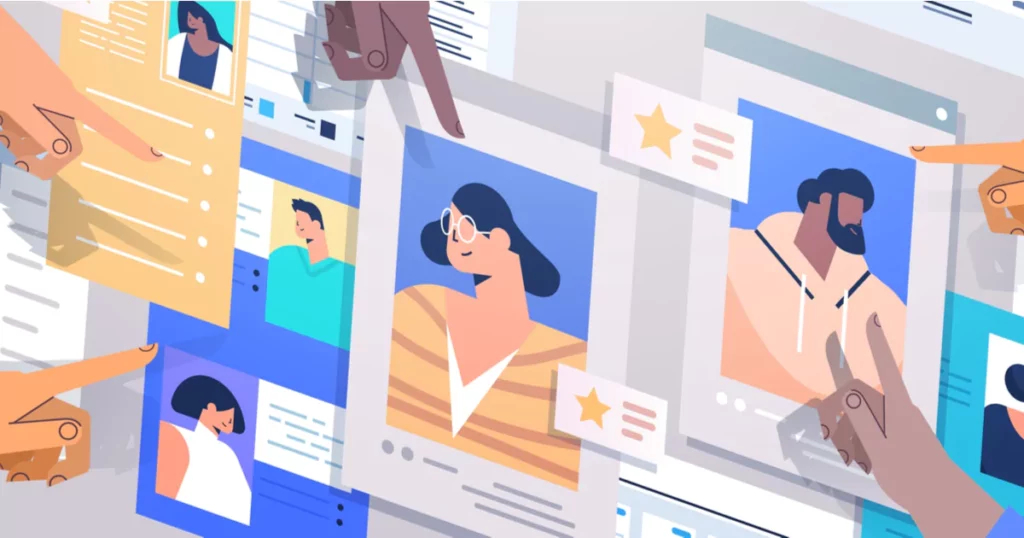
Employee Resource Groups (ERGs) sit at the intersection of employee experience and business outcomes — a major reason they have such a profound impact on an organization. That’s why it’s no surprise that 90% of Fortune 500 companies tap into the power and influence these groups can have on a company and its people.
Employees are the lifeblood for enterprises of any size. Without highly engaged employees, a company won’t last very long. Because ERGs gain influence from an intense focus on the employees and their experiences, these groups have a natural downstream effect on the company at large. In other words, any benefits these groups have to employees, ultimately benefit the enterprise simultaneously. Win-win!
For Employees
It’s hard to cleanly separate an employee benefit from a business benefit, but let’s unpack some of the specific ways employee networking groups can revolutionize your overall employee experience.
Creates Additional Networking Opportunities
Although employees have opportunities to connect with one another within teams, networking groups offer a chance to interact with folks across the organization at every level and in a variety of departments and functions. Importantly, these groups provide an opportunity for team members (who may not have a chance otherwise) to interact with the senior leaders who support or sponsor that ERG or employee network.
Improves Leadership Skills
Employee networking groups often have clearly defined leadership with roles like president, vice president, treasurer, or secretary. Your people will have a chance to flex or develop new skills through facilitating workshops, planning group events, fundraising, and crafting presentations to name a few. Often, companies will discover rising leaders within the organization through the work done for an employee networking group.
For example, Capital One’s ¡Hola! BRG empowers Hispanic/Latinx associates and allies by sponsoring a Hispanic Leadership Development Program and a Hispanic Leaders Coaching Program. They have had over 100 employees graduate from their 6-month programs and around 35% have since received promotions.
Gives Employees a Voice
When concerns come up, it can be difficult for lone employees to find their voice. For lighter matters, employee networking groups provide a space for people to voice, discuss, and find solutions before sharing with managers or leaders. When a concern does need to be escalated, employees can voice that as a unified group. This can take some pressure off the individual.
Connects Employees That Share Interests
Whether it’s your first day or your company anniversary, finding colleagues with shared interests isn’t always easy. Employee networking groups immediately gather people who share characteristics or an interest in a particular topic or cause.
In doing so, employee networks help foster a culture of inclusion and belonging. Employee resource groups like Blacks@Microsoft and Women at Microsoft are excellent examples of this.
Volunteers from Nielsen’s Abled and Disabled Employees Partnering Together (ADEPT) have partnered with the Special Olympics for several years. And on Nielsen’s Global Impact Day, the HOLA group helped immigrants in a Hispanic community in New York City practice for their U.S. citizenship exams.
Boosts Employee Engagement
With all the benefits listed above, in addition to opportunities for leadership, volunteerism, and connection, employee networking groups almost always produce more highly engaged employees. Those involved in networking groups are more deeply connected to others and the organization.
For the Company
When companies invest in the development and maintenance of employee networking groups, the impacts affect every phase of the employee lifecycle including recruitment, hiring, retaining, and advancing. Companies also reap business benefits as ERGs help accomplish major business objectives and outcomes.
Reach Diverse Talent and Customers
Tap into the collective knowledge of employee resource group members to learn how to reach diverse talent and customer audiences. Companies can partner with employee networks to uncover ideas about how to build a workforce that resembles customer demographics. Learn from employees what they would recommend to better reach particular customer groups like minorities, women, or working parents.
For example, do the women in your organization have ideas about how you can improve marketing and sales to women? You bet they do! Who better to design plans to reach target audiences than the people in your organization who share characteristics with your future customers and understand your business from the inside out?
Check out what these four Chicago tech leaders had to say about the business impact of women’s ERGs.
Improve Retention
When employees feel more deeply connected and supported within the organization, they’re less likely to leave. And as businesses learn over time, turnover is very expensive.
Employee networks provide a community for your people to get involved and embedded in. These groups offer chances for leadership and connection while providing employees the opportunity to weigh in on business decisions and strategies. Employees also have fun and enjoy these networks which leads to increased job satisfaction and increased retention.
Encourage Cross-team Collaboration
Departmental and functional silos kill businesses. When departments, teams, and functions don’t share information with one another, everyone suffers from the reduced efficiencies across the organization. By creating new spaces that blend folks from every department and team, employees have a chance to confront — and eventually break — any silos.
Everyone benefits when teams share best practices and knowledge. Employee networking groups are a major tool your company can use to create the exposure necessary to encourage collaboration.

Increase Productivity and Innovation
Networking groups support and encourage diversity, and research shows that diversity can lead to increased innovation. According to McKinsey & Company, “companies whose boards are in the top quartile of gender diversity are 28 percent more likely than their peers to outperform financially.”
At GEICO, ERGs help by “sharing insights that are critical to the marketplace: business opportunities and innovation, inclusive product design, development and marketing, corporate social responsibility, and branding.”
Improves Employee Wellness
The concept of employee wellness is gaining popularity across large and small employers alike. And it’s no surprise why — healthy employees are more engaged and productive. Employee networking groups help address anxiety, productivity, belonging, and connection which all contributes to wellness.
What Makes a Great Employee Network?
The best employee networking groups within the largest, industry-leading companies all share similar qualities.
Led by Employees
Employees need to lead and define their own employee groups. Being employee-led ensures that the focus remains on improving the employee experience and providing safe spaces for members of certain groups to connect and collaborate.
Supported by the Company
The rule of thumb for employee networks should be employee-led, but company-backed. Employees need the support from the top to have the budget, time, and visibility to make real change.
Company support can take shape in many ways including:
- Allocating budget
- Providing executive sponsorship
- Asking for feedback on customer acquisition decisions and strategy
- Asking for feedback on recruitment, hiring, retention, and advancement of diverse talent populations
Organized for Success
Starting with a clear mission and purpose is critical. The best networks (and companies) know exactly what they are designed to do, who they are designed to serve, and ensure that everything supports that overall mission.
Open to All
Although these networks often represent marginalized or underrepresented people groups, all employees should be able to join. These networks can offer allies the opportunity to listen, learn, and grow.
How To Start an Employee Network Group
Building programs from the ground up is intimidating, but don’t be afraid to start small. Here are some steps to get you started.
1. Start With Why
Clarifying and articulating the purpose of ERGs at your organization is arguably the most important step.
Simon Sinek said it best: “People don’t buy what you do; they buy why you do it. And what you do simply proves what you believe.”
Ensure that the role of ERGs at your company is clear and that you communicate and reinforce that purpose to employees.
2. Gauge Employee Interest
Companies of any size can start employee networks. But before you start, take a look at any employee data to ensure your target population can support the formation of an ERG. Consider measuring interest through an employee pulse survey to get a sense of what portion of your employee population would participate.
When armed with data directly from your people, you’ll have a better sense of where to start.
3. Get Senior Leadership on Board
As with all initiatives within a company, employee networks need support from the top. Although they are employee-led, these groups need to be supported all the way up to the highest company executives. But more than just granting permission for the creation, senior leaders need to be active members or sponsors of these groups. One of the major benefits for employees in networking groups is the chance to interact with senior leaders who offer support.
By incorporating executive leadership from the start, you’ll demonstrate your company’s commitment to diversity, equity, and inclusion. Sponsors serve as the champions for the ERG and help increase the visibility and influence these groups have.
At Boeing, “Business Resource Groups are powerful engines of personal, professional and organizational change – in part because they benefit from direct and meaningful engagement from Boeing’s most senior leaders.”

4. Allocate Company Resources
Networking groups can drive serious benefits to the business as they grow and require increasing time and effort from the employees who run them. That said, part of the company budget needs to be allocated to groups to subsidize events, buy swag, create resources, and fund any team building or events.
In fact, companies like LinkedIn and others go as far as compensating ERG leaders for the energy, time, and effort extended above and beyond their day jobs.
5. Establish a Creation Process
Every employee network should be formed with clear goals in mind. This includes defining the mission, structure, roles, responsibilities, and agreeing to partner with leadership to advance diversity, equity, and inclusion efforts.
Be sure to explain to employees the process to form an ERG at your company. Companies often start with one or two ERGs to pilot the process and demonstrate to employees how it will work.
6. Recruit Members and Launch
With a process in place and leadership buy-in secured, it’s time to spread the word about employee networks. Be sure to capitalize on this pivotal moment in your organization with an exciting launch!
Here are some ideas:
- Create videos to advertise, explain, and promote employee networks
- Develop a page on your company intranet that outlines the DEI commitment, with steps for how to create, join, and support employee networks
- Design marketing materials like desk drops, posters, digital signs, flyers, Zoom backgrounds to build the buzz
- Host a virtual launch party
Tip: At the first ERG networking event, whether it’s virtual or in-person, make it fun by incorporating team building activities and icebreakers.
7. Encourage Collaboration Between ERGs
Both employees and the enterprise benefit from the networking that can occur within a single ERG. But consider the major networking and silo-breaking opportunity that stems from encouraging employee networks to collaborate! Events and celebrating major awareness days or months are the perfect opportunity.
Remember, people can and do identify with multiple people groups. For example, companies can encourage collaboration between the network that supports Black employees and the network that supports women. For example, these networks can co-sponsor events during Black History Month. You’ll create a richer experience for everyone involved and provide a variety of perspectives on the important conversations that occur.
8. Measure Business Impact and Act on Feedback
How will you know if your employee networks are moving the needle? As with anything designed to improve the employee experience, you need to incorporate measurement and research. Provide regular opportunities for employees to provide feedback through surveys or focus groups.
If you’re worried about the dreaded survey fatigue, stop and think before you ask any questions. Is the company ready to act on that data? If not, don’t ask. Studies show the main driver for employees’ lack of motivation to respond stems from the belief and perception that the company would not act. The good news? When organizations share results and take steps, employees are much more eager to participate.
In addition to learning how you can improve the employee networks, research can show you what these groups have accomplished for your company! Keep track of data that demonstrate the impact these employee networks have on various metrics around recruitment, retention, hiring, and advancement.
For example, you can track:
- The percentage increase for new hire diversity
- The number of women promoted to leadership positions
- Retention rates for diverse employees
Keep in mind that change takes time. For some metrics, it’ll take months and even years to see measurable differences.

Conclusion: Of, By, and For the People
Employee network groups can have a profound impact on your people and organization. It might seem like a huge undertaking to get started, but the tips and steps above are designed to make it easier.
Don’t be afraid to start small and above all else, remember that employee groups are designed to improve the lives and experiences of your people.To borrow Abraham Lincoln’s sentiments, employee networks need to be “of the people, by the people, and for the people.” That means, supported by employees, led by employees, and in service of employees. These are safe spaces for your people to connect and collaborate. Now, go partner with your people and let them help you build and define these spaces!

